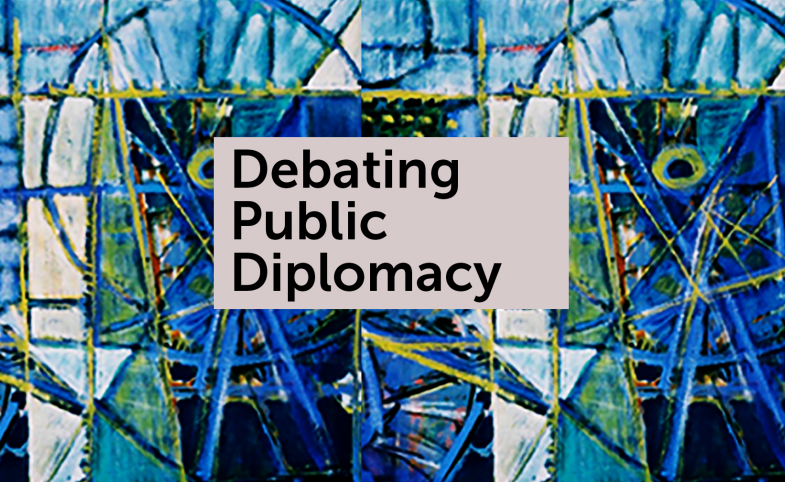Global Cities, Governance and Diplomacy: The Urban Link
By: Michele Acuto
London: Routledge, 2013
 Global Cities, Governance and Diplomacy begins provocatively: using a unique variation of the ’elephant in the room’ analogy, author Michele Acuto tells us that cities are the invisible gorillas in the room of international studies. As the title of the book suggests, its task is to situate cities as agents within current diplomatic and governance processes. The term “situate” is an important one since the book draws broadly from human geography and urban studies. The book has roughly three agendas: one, to demonstrate the growing power of global cities both as “hinges” of globalization and increasingly as actors in diplomatic affairs; two, to demonstrate the potential agency of global cities through a case study of one growing organization, the Cities Climate Leadership Group (C40); and three, to demonstrate how International Relations (IR) and international studies would do well to adopt practices from urban studies and human geography.
Global Cities, Governance and Diplomacy begins provocatively: using a unique variation of the ’elephant in the room’ analogy, author Michele Acuto tells us that cities are the invisible gorillas in the room of international studies. As the title of the book suggests, its task is to situate cities as agents within current diplomatic and governance processes. The term “situate” is an important one since the book draws broadly from human geography and urban studies. The book has roughly three agendas: one, to demonstrate the growing power of global cities both as “hinges” of globalization and increasingly as actors in diplomatic affairs; two, to demonstrate the potential agency of global cities through a case study of one growing organization, the Cities Climate Leadership Group (C40); and three, to demonstrate how International Relations (IR) and international studies would do well to adopt practices from urban studies and human geography.
The methodologies employed by Acuto to situate the agency of global cities may be unfamiliar to many IR students and scholars, as they are based largely in the disciplines of human geography and urban studies. These approaches include scalar structurationist analysis (Brenner, 2001), Actor-Network Theory, and insights from science and technology studies, such as the important agency of non-living things as “actants” (Latour, 2000). One of the rationales for borrowing extensively from these disciplines is that the author does not want to transfer the logics of state-centric diplomacy to the logic of cities. The use of these types of theories is to help us “see like a city” (p. 163), instead of seeing like a state.
This broad methodological framework both empowers Acuto’s analysis and leaves him with a problem. Acuto quotes Patrick Le Gales to summarise this challenge: “any study of cities must steer a course between the Scylla of representing the city as a separate unit, thus risking reification, and the Charybdis of showing it to be infinitely diverse and complex” (p. 65). The book navigates between these dangers more or less successfully, but often errs toward the diverse and complex. Near the end of the book, Acuto makes his position clear: “The task here is to illustrate more complexity rather than provide more abstraction.” (p. 168). In the end, Charybdis wins out.
 For those used to a social science that works towards greater levels of theoretical abstraction, this process of progressive and dialectical contextualizing and describing can be frustrating. However, the book is entirely consistent with its own ethics of investigation. Indeed, Acuto makes clear one of his goals is to move the discipline of IR in a direction closer to the creativity of human geography. As he argues, he would very much like IR to “catch up” (p. 23) with the progress made by human geography in mapping the complex spatial dynamics of human relations.
For those used to a social science that works towards greater levels of theoretical abstraction, this process of progressive and dialectical contextualizing and describing can be frustrating. However, the book is entirely consistent with its own ethics of investigation. Indeed, Acuto makes clear one of his goals is to move the discipline of IR in a direction closer to the creativity of human geography. As he argues, he would very much like IR to “catch up” (p. 23) with the progress made by human geography in mapping the complex spatial dynamics of human relations.
With regards to the role of the C40, rather than focusing on one or two crucial factors, the book forces us to account for an aggregation of multiple concepts, including the passive agency of global cities as the hinges of globalization; the power imbedded in networks; and the often stifling rule sets decided by actors at different scales (among other variables). Understanding the potential agency of cities as “acting actors” requires us to also understand their “passive agency” as the key conduits of globalization. The position of cities at the hinges of globalization give them unique abilities for “multi-scalar agency,” which can be phrased as the ability to connect with actors up and down geographical scales. The approach of the C40 is neither the global deal approach to climate change of state-led diplomacy, nor the bottom-up activism of civil society actors like NGOs. Rather, the C40 is diplomacy from the middle (p. 112). Thus, Acuto is at pains to demonstrate how cities must work with resources different to those of states; they must use their strategic geopolitical position, public-private partnerships, and ability to network as sources of power.
Much of how you view this book will depend on your opinion of its use of theoretical tools borrowed from human geography and urban studies. As Acuto argues, the discipline of IR would do well to use a more diverse set of tools to examine the complicated spatial relations that make global cities both indispensable sites of global governance, and also help them come into being as important actors in diplomatic practices. If you agree that IR and international studies must catch up with human geography—in other words, become more creative, nuanced, and flexible—then you are sure to welcome the contributions of the book. Even if you are coming at the book from the perspective of a more traditional social scientist, there is still much to like, especially from the case study chapters that focus on the C40 and its influence. In these chapters, causal chains are clearly explained and mapped out with well-constructed diagrams and charts. In addition, much of the theoretical language of the first and last chapters is moderated.
If you are reading from a more traditional social science perspective, however, you are also likely to view the early theoretical chapters as cumbersome or perhaps even unnecessary. You may also find calls to revolutionize the discipline by embracing the tools of human geography and urban studies as overblown or even dismissive of the work done within IR and political science on the different ways to conduct case study research (e.g. George and Bennett, 2005). One might also fault the author for not trying move “up” the theoretical chain of analysis from a single case study to comparative case studies, or perhaps even falsifiable hypotheses, a comprehensive theory, or a prediction of the likely trajectory of the C40. Again, to fault the author for these things is to misunderstand the book’s methodological framework.
My own take on the book is somewhat mixed. While welcoming an exploratory approach to a relatively new subject and embracing conclusions that are “aggregate” or even exploratory in nature, I thought that clearer links could have been made between theory and research. As it stands, the disconnect between the early theory chapters and the middle case studies chapters significantly weakens the author’s calls to shift the field of IR in the direction of human geography and urban studies. My own view was that much of the same work (though not all) could have been carried out with a much lighter theoretical framework.
References
Brenner, Neil. (2001). “The Limits to Scale? Methodological Reflections on Scalar Structuration.” Progress in Human Geography, 25, 591-614.
George, Alexander L. and Andrew Bennett. (2005). Case Studies and Theory Development in the Social Sciences. Cambridge, MA: MIT Press.
Latour, Bruno. (2000). “When Things Strike Back: A Possible Contribution of Science Studies to the Social Sciences.” British Journal of Sociology, 51, 107-123.








